Last week, we were presenting at CoSN2015, the largest EdTech conference in the US targeted at practitioners in School Districts.
We were there to shine a light on the EdTech innovation that is happening in Ireland: showcasing innovative EdTech companies; the collaborative research that is happening in Learnovate (more on that in a separate post); and, the real impact being generated by the ground-up movement that is Excited.ie – the Digital Learning Movement.
We were also there to learn: to find out what constitutes best practice across the US in terms of approaches to using technology to support teaching and learning. The conference included over 100 sessions with practitioners talking about how they had implemented technology in their school districts. Here are five key takeaways … some are new, others maybe just confirming what we already know!
1. 100Mbps is not enough
Future-proofing for connectivity requirements in schools was a common theme. Representatives from Chesterfield County talked about the challenges of rolling out 33,000 Chromebooks to students (see https://sites.google.com/a/ccpsnet.net/anytime-anywhere-learning/). They expressed their concern at having to ‘starve some schools with 100Mbps’. Their target is 5+Gbps for all schools in 2015/16.
2. If you’re still discussing the merits of 1:1 devices, you’re already out of the race
A number of sessions focused on the rollout of thousands of devices to students. What really caught the eye, though was Houston School Districts ‘PowerUp’ programme – a district wide initiative aimed at transforming teaching and learning across 282 schools. Their strategic, multiannual initiative is a blueprint for how a well-planned, comprehensive initiative that involves all stakeholders can be delivered successfully. And will improve outcomes and prospects across the board for graduating students.
Houston School District: Becoming #GreatAllOver
3. Personalisation is the norm
Across the board, we saw examples of where personalization (in teaching and learning) has become the norm when implementing EdTech strategies. From platforms to content, CPD to devices. And what better content than that being delivered by the Smithsonian’s Centre for Learning and Digital Access – who really understand the power of devolved, personal curation allied to great quality content and resources.
4. The challenges of Big Data should be embraced
It’s far too easy to slap a big ‘Data Privacy’ badge on attempts to use data analytics to improve education services. However, by developing a culture of trust between students, parents, teachers and administrators, it is possible to unlock the potential of applying big data techniques in an education context. More transparency on data protection and data privacy issues can go a long way in establishing that culture.
5. “Being right is not a strategy for change – you need a process”
Michael Fullan used this quote during his keynote on introducing new pedagogies. However, it’s equally applicable to many challenges of introducing EdTech in schools – not least when applied to the need for direction at a national level. A coherent national strategy can be a catalyst for change if it includes core components (connectivity, devices, teacher CPD, digital content, R&D), backed by an clear execution plan. Obama’s ‘Connect-Ed’ Initiative is a good example of how a national strategy can achieve real change in education. An incomplete strategy (or worse, no strategy!) is not a strategy for change – and will not contribute to long-term and sustainable economic competitiveness.
Martyn Farrows




